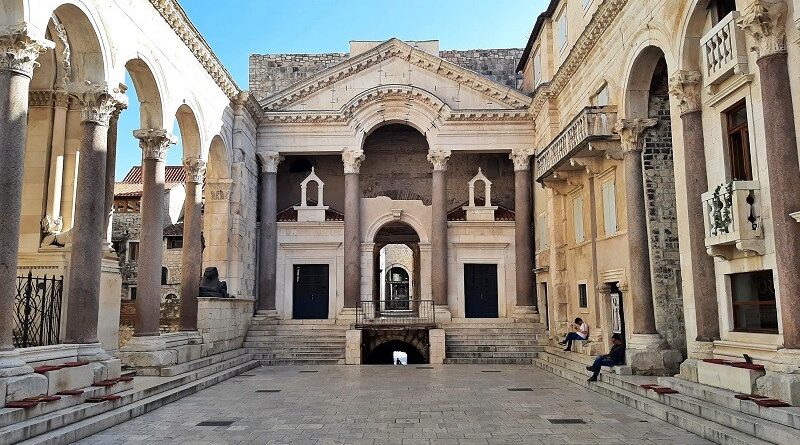Split: Croatia’s Bustling Seaside City Full of History
In this destination guide we visit Split, Croatia’s main seaside city with a bustling old town full of history.
Split visit
After a fun couple of days exploring the beautiful city of Trogir and the nearby island of Ciovo, I still had a day left in Croatia’s coastal region of Dalmatia before I had to travel back home.
Of course, you cannot visit this part of Croatia without visiting Split, the country’s second-largest city and one of it’s main tourist destinations.
I have visited Split before and although it is indeed a wonderful city, the tourist crowds can be overwhelming in the high summer season.
However, as I was visiting in spring and tourist numbers were still down due to COVID, I ended up having the city almost exclusively to myself.
The first thing most tourists will see of Split is the city’s train station and adjacent central bus station, which are both conveniently located right across from the Jadrolinija ferry port where the boats to the Croatian islands and Italy depart.



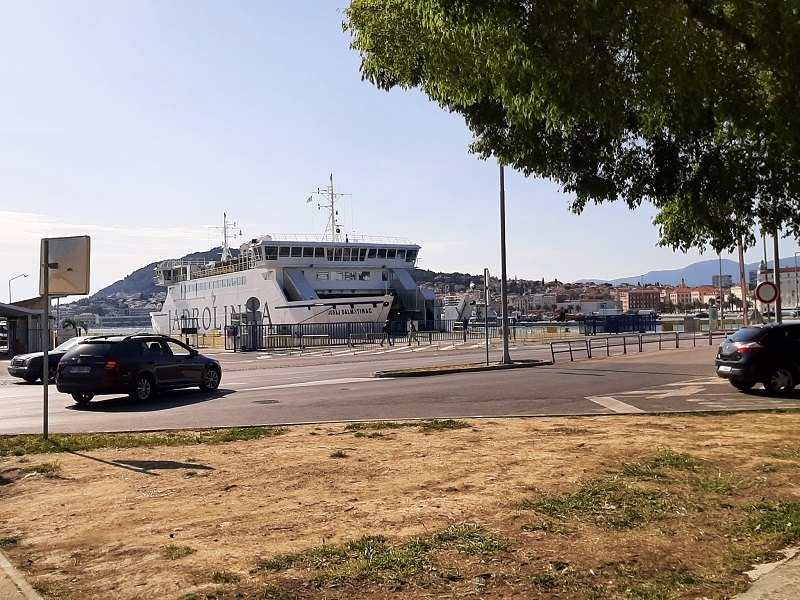

Riva
If you head from the bus and train station towards Split’s old town centre you will walk straight upon the Riva.
The Riva is Split’s famous seaside promenade.
Walking across this palm-fringed promenade with its bright marble pavement contrasting beautifully against the deep blue water of the Adriatic Sea will bring you straight in a holiday mood if you weren’t already.
There are plenty of cafés and restaurants lining the Riva, although unsurprisingly you will pay a premium here for your drinks given the popular location.


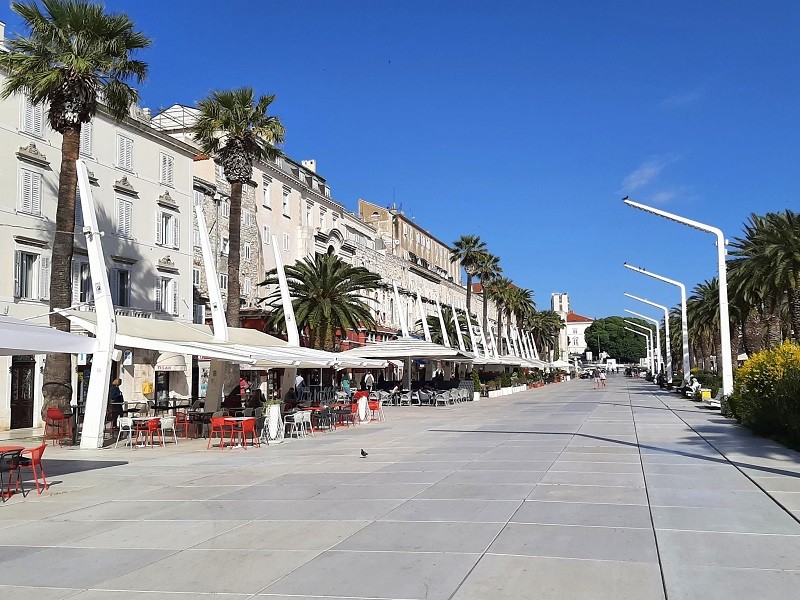


Into the old town
Split’s walled old town centre is located directly behind the Riva.
The old town of Split is quite unique as it is extremely well-preserved and features sights out of several historical periods ranging from the Roman Empire to the Venetian era.
Around Trg Braće Radić (Radić Brothers Square) – which is locally also known as Voćni Trg (Fruit Square) – you can see some fine examples of Venetian architecture.
At this square, you can also find a statue of Marko Marulić, a well-known Renaissance humanist who is also the national poet of Croatia.
Narodni Trg (People’s Square) is another beautiful Venetian-era square lined by historic buildings such as the Old Town Hall from 1443 with its loggia and Gothic windows.
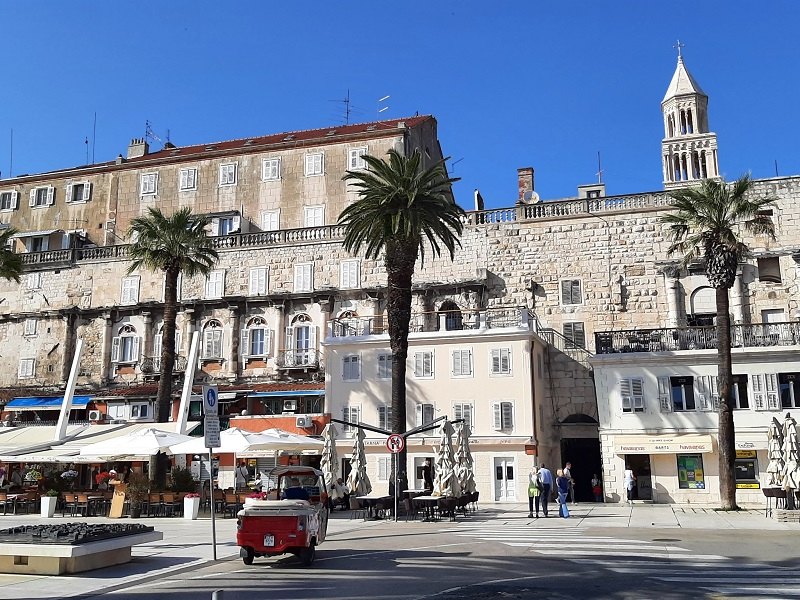


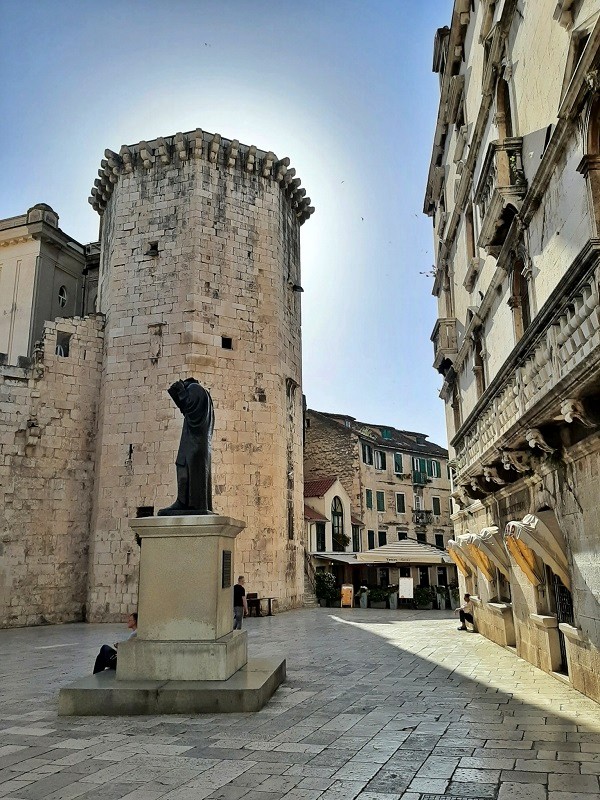


Diocletian’s Palace
The most famous sight in the old town of Split is arguably Diocletian’s Palace.
Diocletian’s Palace encompasses about half of what is now the old town of Split – which tells you a lot about how massive it once was.
Built in the 3rd century AD, the complex not only used to house Emperor Diocletian’s court but also an entire military garrison, therefore feeling more like a walled town than just a palace.
In the times of Ancient Rome, Split was known under the Latin name Spalatum and was not only the capital of the Roman province of Dalmatia but one of the biggest and most important cities of the entire empire.
It’s not a surprise that the entire palace complex – together with the rest of the old town of Split – are inscribed on the UNESCO World Heritage List.
As Diocletian’s Palace really is a living part of the old town of Split, there is no entrance fee or ticket required to visit it.
You can walk through the streets and buildings of Diocletian’s Palace in the exact same way you would walk through any other old town street!
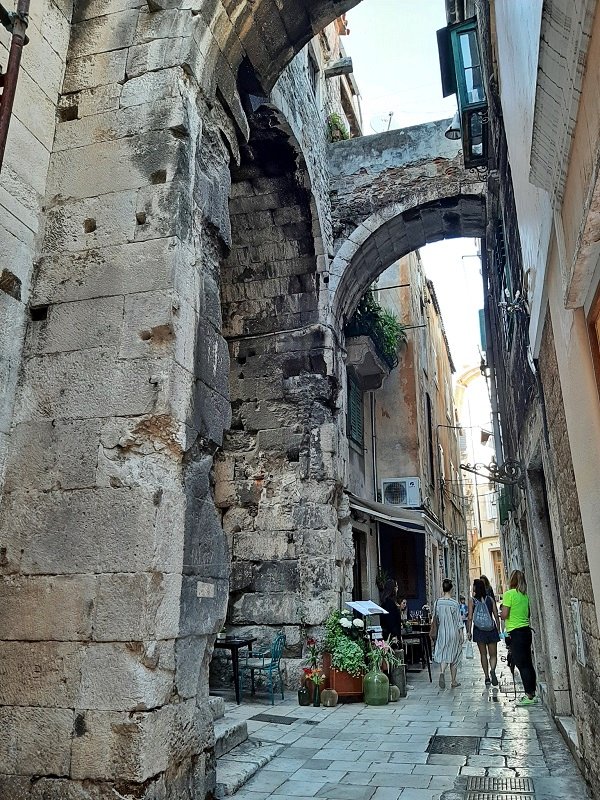
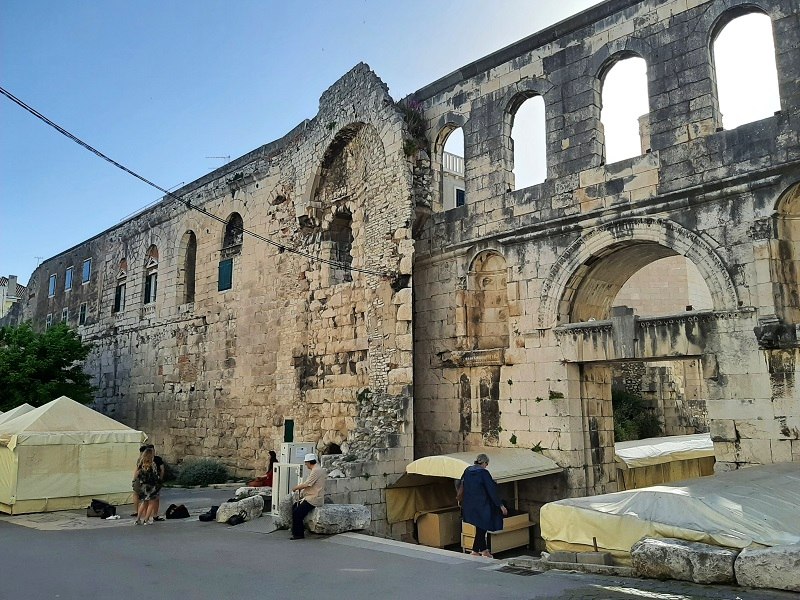
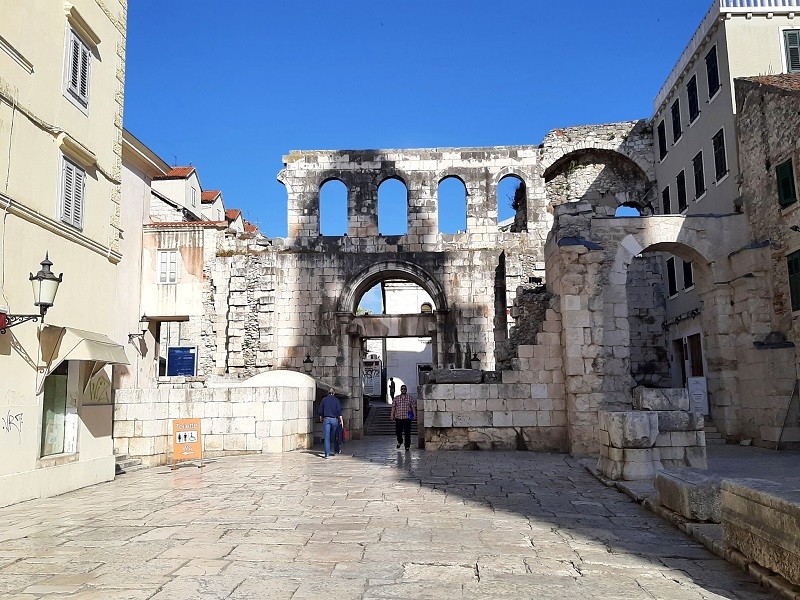
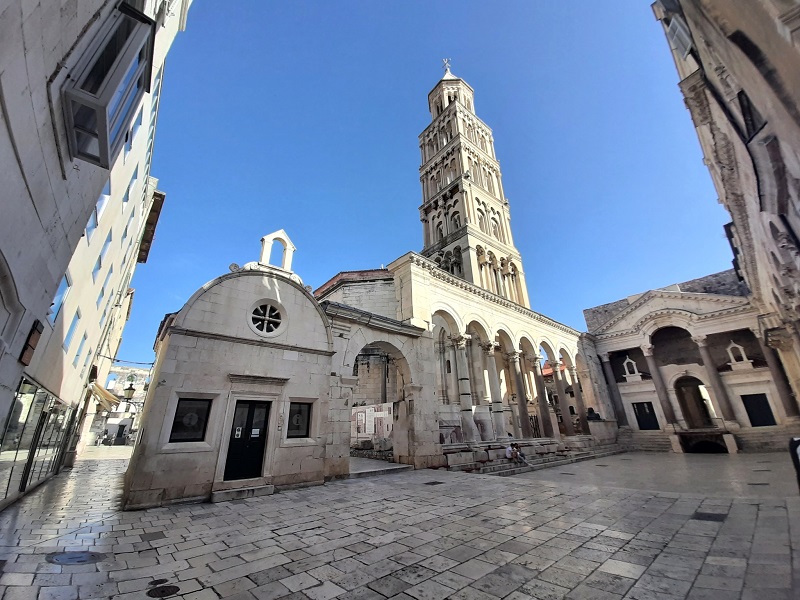

Peristyle
When you stand in the middle of the Peristyle – the central courtyard of the palace – you have the best view over all the Roman architectural marvel.
At one side of the Peristyle you can find the Cathedral of Saint Domnius, which was originally built as Diocletian’s Mausoleum in the year 305 AD and only later converted into a Cathedral.
The bell tower of the Cathedral of Saint Domnius, which rises high above the Peristyle, is a later addition as this beautiful Romanesque structure was only built in the 12th century.
By far the oldest object you will see is the granite Egyptian Sphinx which adorns the Peristyle, as this dates back to the reign of Pharaoh Thutmose III (1479 – 1425 BC).
Emperor Diocletian quite liked the ancient Egyptian custom of having a Sphinx guarding the mausoleum and temples, so he ordered his troops to bring some over from Roman-occupied Egypt.
Another noteworthy architectural feature of Diocletian’s Palace is the wonderful 4th century vestibule (rotunda), which was the entrance of the main corridor which linked the Peristyle with the imperial apartments.

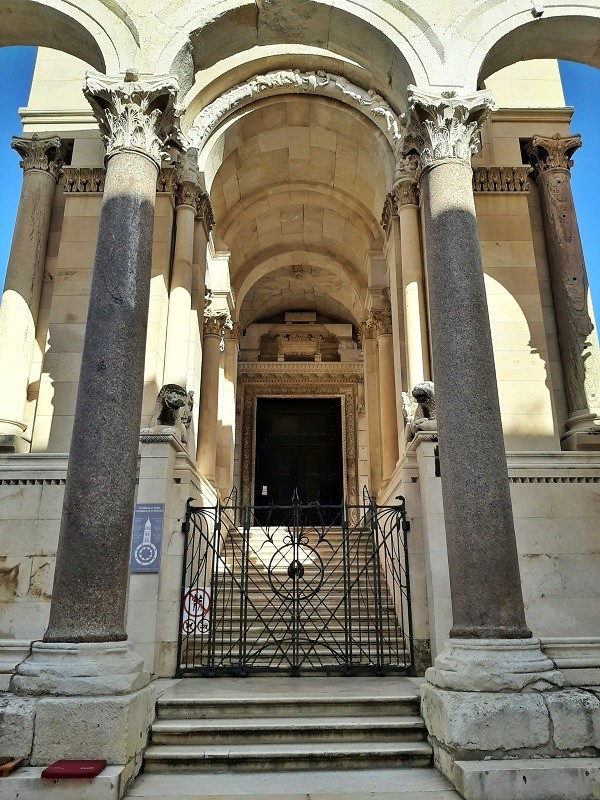

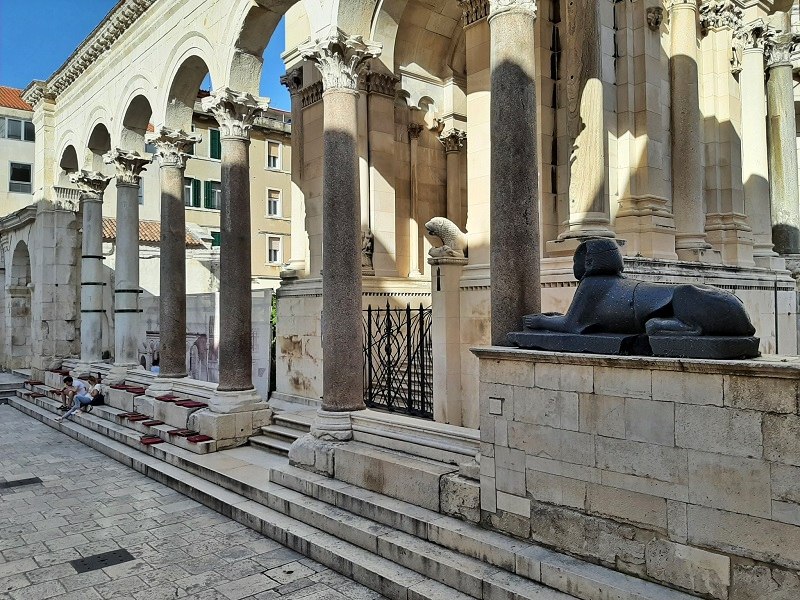

Walking around Diocletian’s Palace
It’s great fun to explore the structures and streets surrounding the heart of Diocletian’s Palace.
You can walk through the cellars, see remnants of the old walls and fortifications and even some beautiful old mosaic tile floors.
What I love about Diocletian’s Palace is that it’s a living place and not a sterile museum.
In typical southern European fashion, it’s not uncommon to see locals hanging out the laundry on clotheslines linking their old stone mansions with the Roman walls!


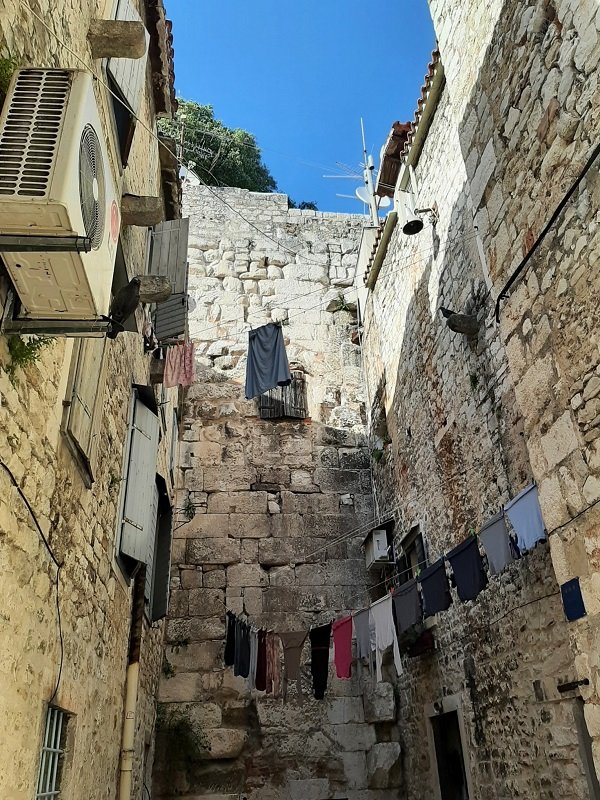



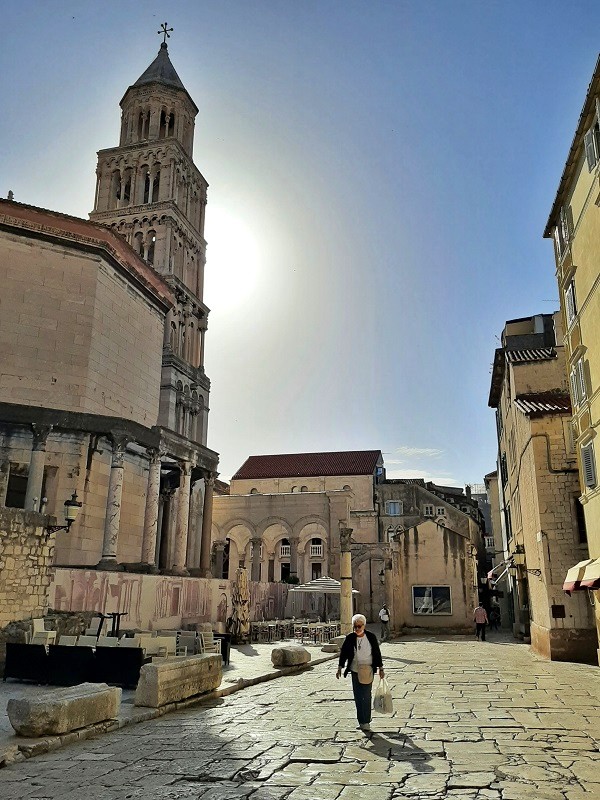
Old town walk
Having visited most of the important sights of Diocletian’s Palace, I decided to take a walk through the surrounding streets.
Through some charming alleys – some completely empty, others abuzz with people enjoying some food or drinks at one of the many old town cafés and restaurants – I arrived at the Golden Gate.
The Golden Gate (called Zlatna Vrata in Croatian) was built in the 4th century and is another fine example of Roman-era architecture in Split.
It was originally the northern entrance to Diocletian’s Palace complex, being located on the road to the ancient town of Salona.
Being at the far northern edge of the city centre, I turned back and explored some more atmospheric old town streets.
When I arrived back at People’s Square it was time for some well-deserved ice cream after all the walking.

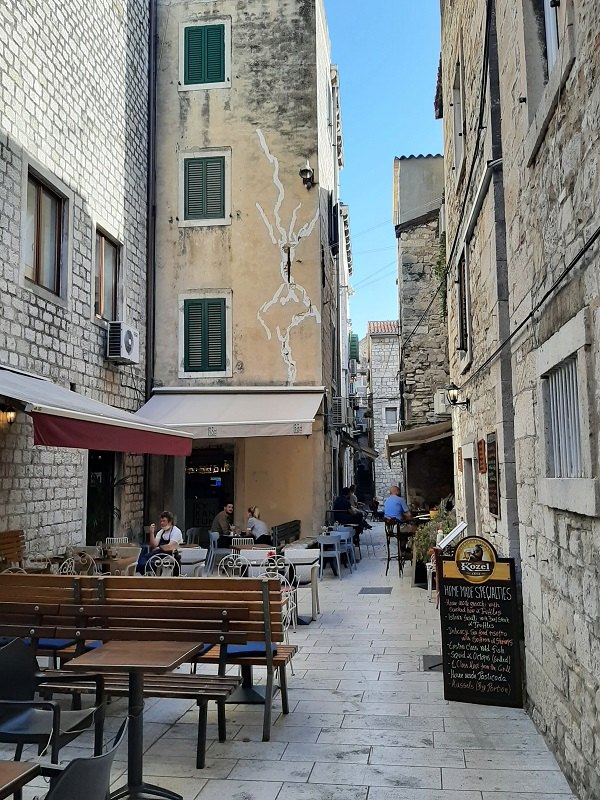
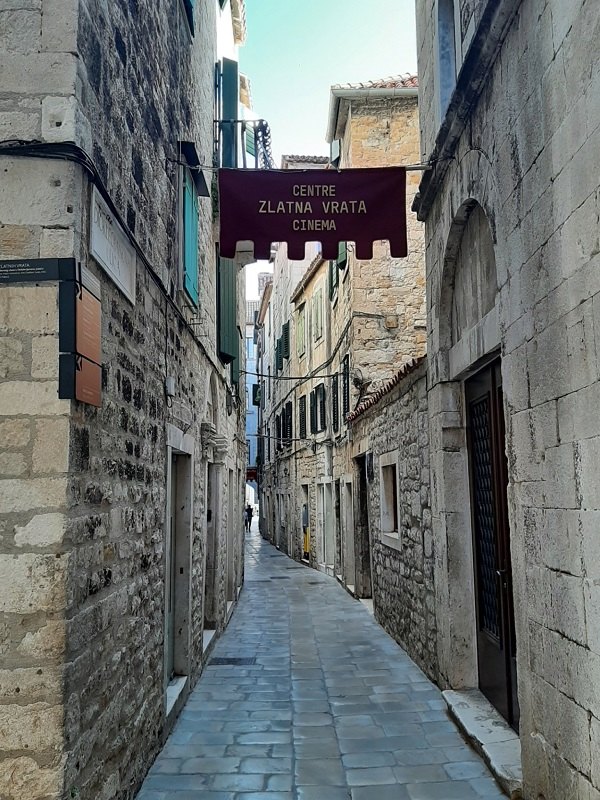

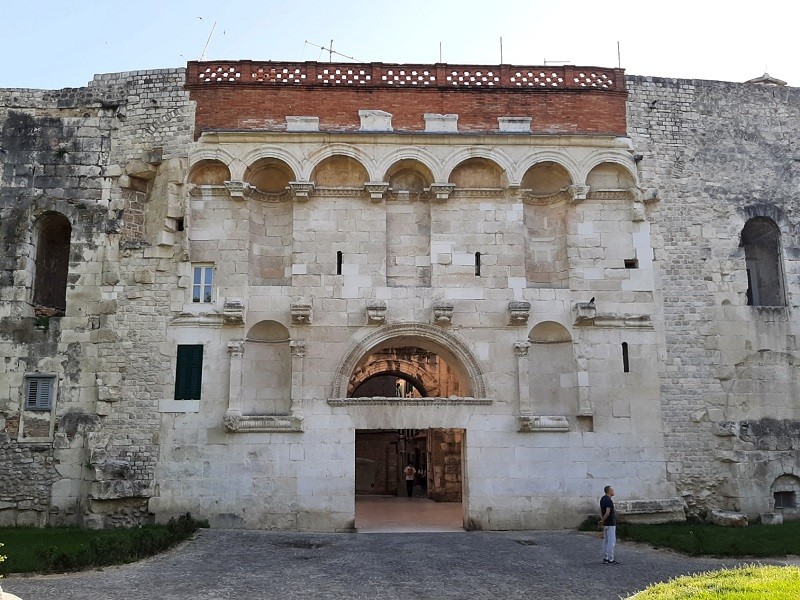


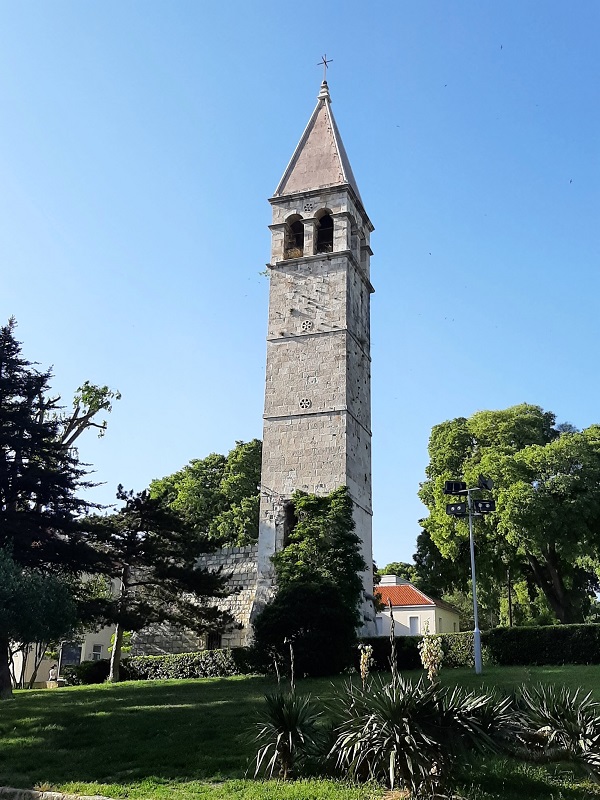



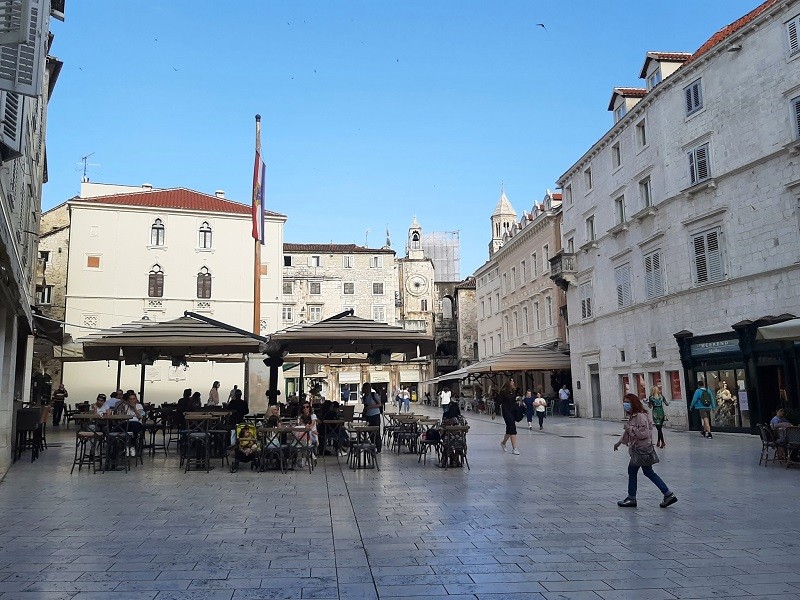

Split off the beaten track
Although Split’s old town is magnificent, it can be rather touristy and crowded around Diocletian’s Palace and the Riva.
Weirdly, not so many tourists visit the western part of Split’s old town, which feels delightfully off the beaten track in some parts.
If you love a maze-like patchwork of cute alleys, cafés and restaurants full of locals enjoying their coffee or meal and slightly derelict but lively neighbourhoods, you should definitely check out the area to the west and north of Republic Square.
It’s by far my favourite part of the city and makes for a great area to mindlessly wander around.



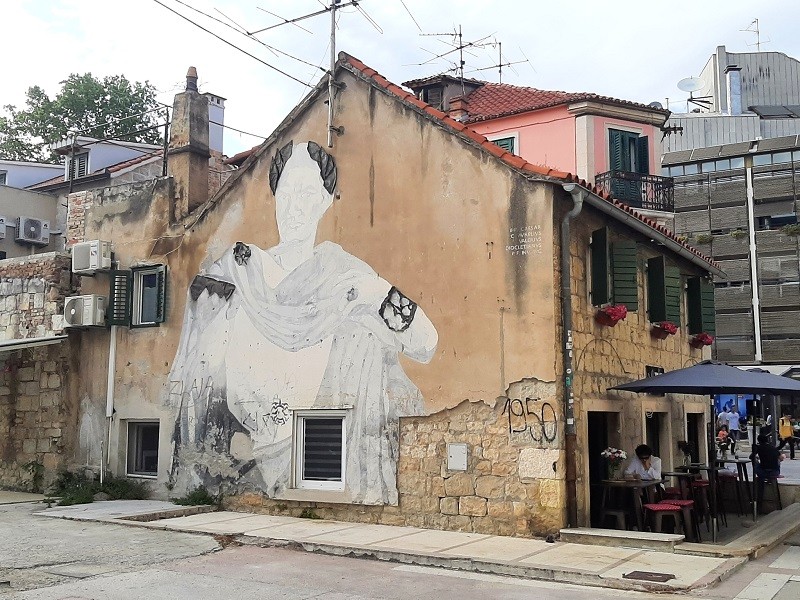



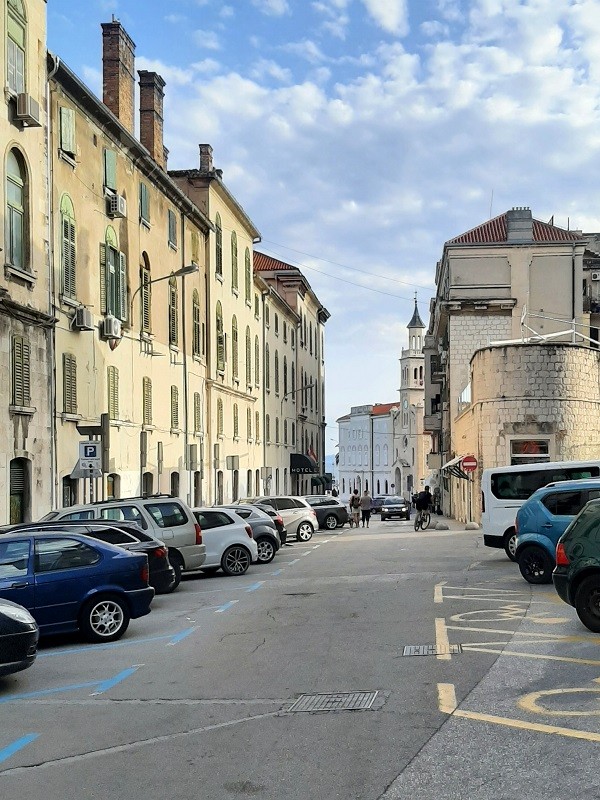
Swim
If all the walking and sightseeing around the old town of Split gets too much, you can always take a dive in the Adriatic Sea.
Although the city beaches of Split aren’t the best in Croatia, they certainly suffice for a quick swim to freshen up or a bit of sunbathing.
Towards the west of the old town you can find Plaža Ježinac (Jezinac Beach), while towards the south-east of the bus and train station you can find Plaža Bačvice and Plaža Firule.
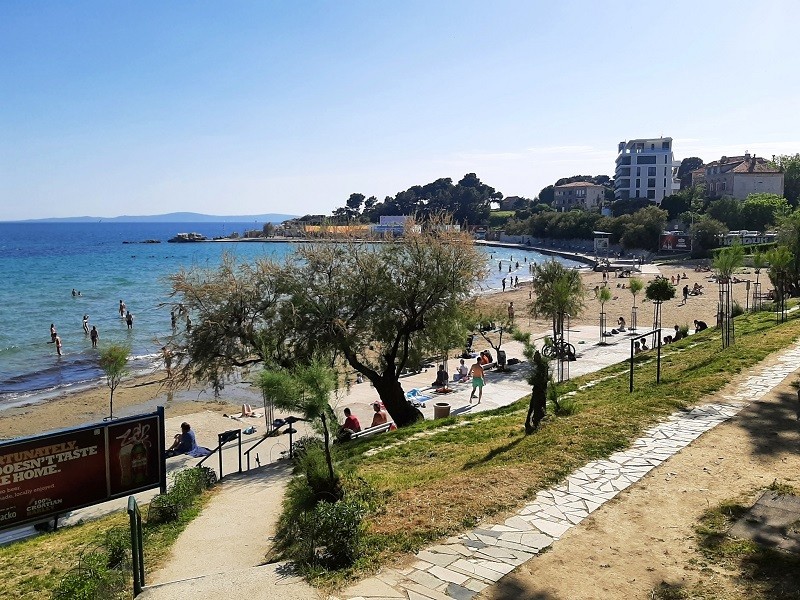
Dinner
Croatia has a big culinary tradition so it’s not much of a surprise that Split has a great choice of restaurants.
As Split is Croatia’s main seaside city, there are obviously some quality seafood restaurants to be found.
However, I ended up eating a fantastic pizza at Pizzeria Portas in the northern fringes of the old town.
After the meal, I had a nightcap or two in one of the old town cafés before retreating relatively early to my hotel as I had to rise early the next day for a long train ride up north.


Conclusion
Split is an absolutely delightful city and a must-stop on any trip to Croatia.
Although I’ve been to Split before, I didn’t mind at all making a return visit as the city’s beauty never fails to impress you always discover something new walking around the old town.
It’s however not just the charming old town which makes a visit to Split a must, as the city has a huge historic significance.
Split’s most famous sight – the UNESCO World Heritage-listed Diocletian’s Palace – is one of the best preserved Roman-era buildings in all of Europe.
In summer, Split can be overcrowded with tourists, but if you visit the city in the shoulder season you can enjoy all of its sights in peace and relative quietness.
Trip report index
This article is part of the ‘Across Europe by Train: Interrail in the Age of Corona‘ trip report, which consists of the following chapters:
1. Review: LOT Polish Airlines Economy Class Bucharest to Warsaw (Embraer ERJ-175)
2. Walking Through an Empty Warsaw in Corona Lockdown
3. Review: Four Points by Sheraton Warsaw Mokotow
4. Review: LOT Polish Airlines Economy Class Warsaw to Zurich (Boeing 737 MAX)
5. A Stopover Walk Through the Old Town of Zurich
6. Review: Railjet Train Zurich to Feldkirch
7. An Evening in Friendly Little Feldkirch
8. Review: Nightjet Train Feldkirch to Graz
9. A Short Walk Along the Sights of Graz
10. Review: Emona EuroCity Train Vienna – Ljubljana – Trieste
11. Zidani Most: Europe’s Most Picturesque Train Station
12. Review: Ljubljana to Zagreb by EuroCity Train EC 1211 ‘Sava’
13. Flying With Trade Air on a Let L-410 Turbolet Across Croatia
14. Review: Palace Derossi, Trogir, Croatia
15. A Visit to the Tranquil Island City of Trogir, Croatia
16. Cycling on Ciovo: A Trogir Day Trip by Bike
17. Split: Croatia’s Bustling Seaside City Full of History (current chapter)
18. Review: Croatian Railways ICN Train Split to Zagreb
19. Review: Esplanade Hotel, Zagreb, Croatia
20. Zagreb: A Guide to Croatia’s Underrated Capital City
21. Review: EuroCity Train “Croatia” Zagreb to Vienna
22. Review: Dacia Night Train Vienna to Bucharest

